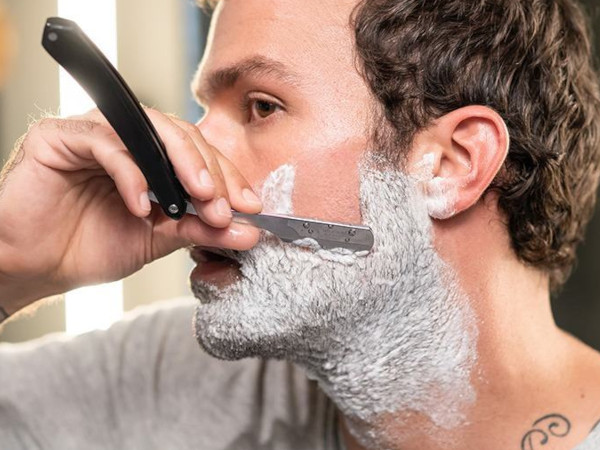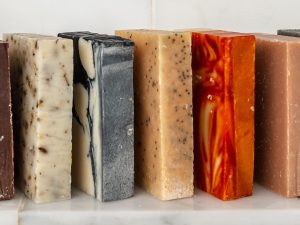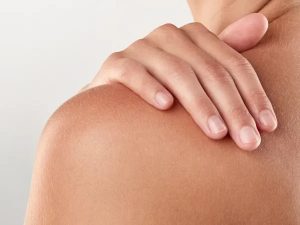Low-impact shaving - introduction

“A good razor if rightly used, will last for years, and will be a source of continual pleasure when used, whereas a poor razor will do inferior work, irritate the skin and make the face sore, and be a continual source of trouble and annoyance. If you have such a razor, the sooner you throw it aside and substitute a good one, the better” – from Shaving Made Easy, 1905
Contents
What is it?
First, the lowest-impact approach to shaving is not shaving at all. But you could say that about a lot of our topics. For example, solar panels – the most low-impact approach would be not to use electricity. But people want electricity, so let’s do it in a way that is as low-impact as possible, and that you can do even if there’s any sort of societal breakdown. It’s the same with shaving – a lot of people do want to shave, so let’s do it with the lowest impact possible, and that’s doable in case of any stage of societal collapse.
Most people go straight to disposable razors, disposable cartridges (that attach to a plastic or metal handle that you keep) or electric shavers, without giving it much thought – because that’s seen as the norm, and advertisers are telling them that they need a lot of expensive and disposable kit, and more than one blade in their cartridge. This is a classic corporate tactic – rather than producing what people want, corporations produce what will make them more money, then spend a fortune on advertising to persuade people that they want it. No-one, ever, asked for a razor with 5 blades.
Let’s face it, any product that needs very few replacements, or doesn’t wear out at all, is a nightmare for corporations, and so obviously they’re not going to be interested in it.

Low-impact options
So the two low-impact shaving options we’ll be looking at are:
- Straight (aka cut-throat or open) razors. They have a blade that usually folds into its handle. You use it, keep it sharp, store it, and that’s it. If you’re interested, here’s (much) more information on straight razors.
- Safety razors. You buy the razor – a blade holder plus handle, and you buy the stainless steel blades separately. Blades are disposable, but recyclable. The handle can be metal, wood, bamboo etc. Metal is probably best, as wood or bamboo won’t last so long if used every day in a wet bathroom. More info on safety razors.
These are now sometimes called ‘artisan shaving’, because a bit more skill is required – and it’s experiencing quite a boom.

History
As with most things, shaving has become increasingly environmentally-damaging over time. First of course, there would have been no shaving at all for tens of thousands of years, and first attempts were with pieces of flint, sharpened shells or other natural materials. Straight razors then ruled supreme, with local craftspeople forging and sharpening blades that lasted a lifetime and required no further resources. Then at the cusp of the 19th and 20th centuries, safety razors with disposable blades appeared, and that disposability boomed in the 20th century, so that nowadays, in the UK alone, around 20 million people use disposable razors of some description, or electric shavers. That represents a huge amount of corporate profits, energy, resource use and unrecyclable waste. All unnecessary if we return to reusable products, or not shaving at all.
What are the benefits?
Environmental
- Less resource use and waste. No electricity required in use.
- It’s pretty obvious that a cartridge or disposable with 3, 4 or 5 blades was dreamt up by marketers, and has nothing to do with a comfortable shave.
- Cartridges are almost entirely non-recyclable, and more blades require more resources and energy. This goes for disposables too, with a bit more resources, energy and waste involved for the handle.
- Electric shavers need even more resources and energy to produce, as well as electricity to use.
- Safety razor blades are recyclable, and require much less energy and fewer resources than the alternatives – apart from straight razors, which, once manufactured, don’t require energy or resources at all, and are 100% recyclable.

Social
- A straight razor can be made in your community, by a blacksmith / bladesmith. This keeps craft skills alive, keeps wealth in communities and doesn’t line the pockets of corporations.
- A straight razor that you can sharpen, never needs to be replaced, never needs any parts, and that can be made by a local craftsperson is bad news for capitalists. All products should be made that way whenever possible.

Cost
- Disposables cost around 20p-£1.80 per razor. Cartridges c. £1.80-£3.
- Safety blades are around 6-9p per blade – much cheaper.
- Straight razors don’t have any more costs after the original purchase, and are by far the cheapest option long-term.
- You’ll also have autonomy – safety blades fit any safety razor – you don’t have to search for cartridges that only fit one kind of corporate razor.
Quality / your skin
- More blades in a cartridge increases the risk of ingrown hairs or skin irritation.
- With safety or straight razors, you’ll get a better shave with less chance of skin irritation / ingrowing hairs / redness, because the blade will be sharper (either because it’s changed more regularly, or it’s sharpened).
Other
- Although of course you don’t care about superficial things like being ‘cool’, let’s face it, safety razors are much cooler, and straight razors are off-the-scale cool, and you’ll have the satisfaction of owning a quality product that can support craftspeople and will last for years. This is the same with clothes, and with craft products generally.

What can I do?
First, learn more. Here’s a classic from 1905: Shaving Made Easy, turned into a wiki.
Next, decide if you need to be super-smooth every day. Obviously, shaving every other day will use half as many blades (if you’re using a safety razor), or maybe your straight razor will last longer? A bit of ‘designer stubble’ won’t hurt you.
If you fancy a straight razor, maybe get a shave from a Turkish barber first, to see how they do it and how it feels.

Buying
- Avoid corporates, who are far from ethical, and only interested in selling you as much stuff as possible.
- If buying a safety razor, make sure it’s for double-edged blades, that you can turn round to use both edges. Some safety razors are for single-edged blades, but double-edged blades are much more common.
- Make sure the safety razor handle is knurled or ribbed for good grip.
- Safety blades don’t have to be packaged in plastic. Shark sell blades in little card/paper packs.

Soaps
- Avoid gels / foams / plastic containers or spray cans, which use way too many resources, usually toxic chemicals and are unnecessary.
- A shaving bar is soap, but with additional things to soften hairs (the softer the hairs, the easier they are to cut), and to be more hydrating, because you don’t want the skin on your face to dry out. You can find shaving soap recipes online. But often these contain ingredients that have to come from the other side of the world. Ordinary soap and water is fine, or you can make your own.
- Shaving brush: you can just use your hands, but a brush lifts hairs to make them more accessible for the razor to cut. Just using your hands can push the hairs down instead.
- Shaving brushes often use badger or boar hair. If you’d like to avoid animal products, but avoid plastics too, you can get brushes made from sisal (a type of grass) that works just as well.

Use
- You need to know what you’re doing, or you might cut yourself. It’s not difficult though – it just needs a bit of practice. But that’s the same with any kind of razor.
- Read up / watch videos. Talk to others who do it.
- You can get adjustable safety razors to adjust the angle of the blade. Start further away from the skin for the longer hairs, and adjust as you shave to get closer. You can shave closer from the start as you get more experienced.
- You’ll get quicker with experience too, which is good. You don’t want something you do every day to be a big chore.
- You’ll probably get around 3-6 shaves from each side of a safety blade.
Sharpening / care
- Keep your razor away from moisture – so don’t store it in the bathroom. Maybe in a bedside cupboard?
- Dry after use, and wipe with a little olive oil.
- Learn to keep your straight razor sharp with a leather strop.
- Here’s a deeper dive into straight razor care and sharpening.
- You can even sharpen safety blades.
Specialist(s)
Thanks to Harry Gardiner of Clear Confidence for the information.
The specialist(s) below will respond to queries on this topic. Please comment in the box at the bottom of the page.

Harry Gardiner runs Clear Confidence, supplier of eco-friendly shaving products. He’s a vegan, who wanted to provide shaving/grooming products that are cruelty- and plastic-free, and that don’t damage the environment. They provide a bank of shaving advice on their website.



